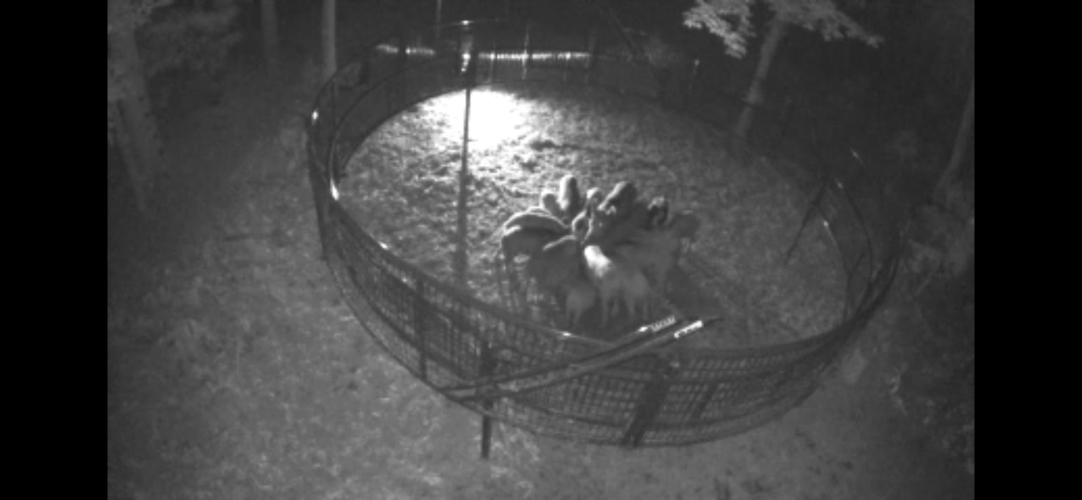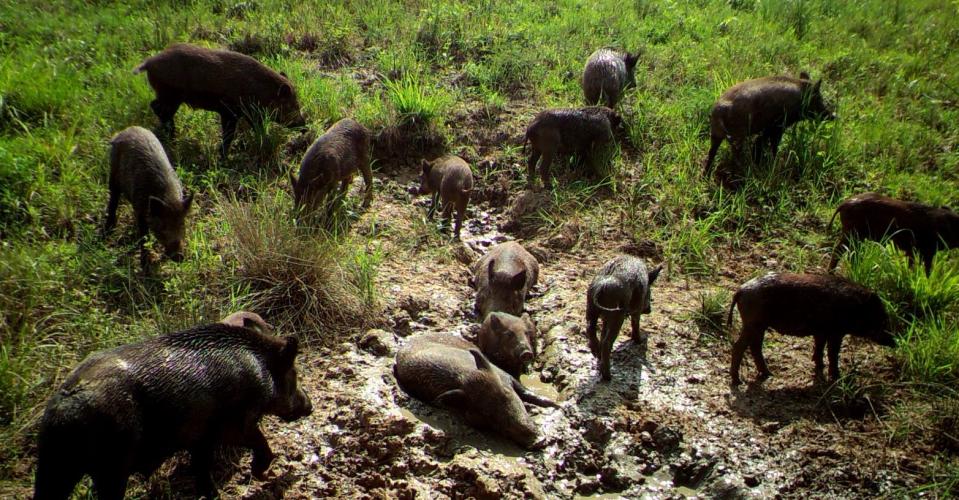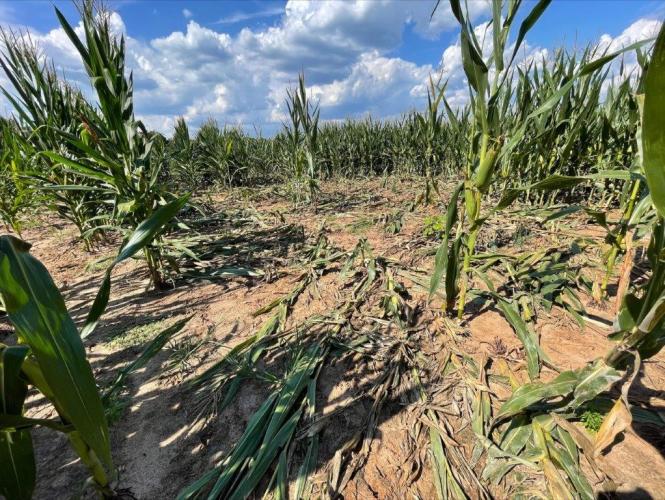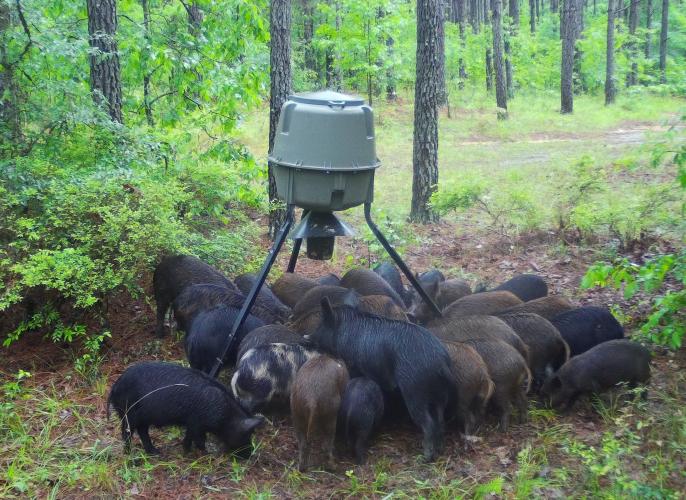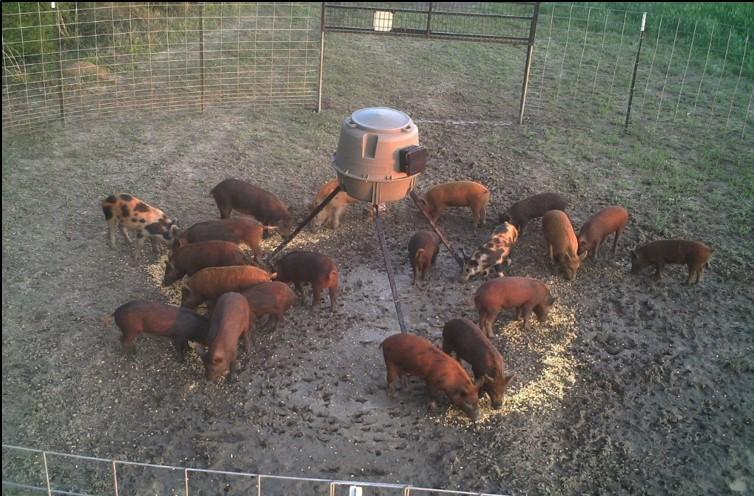Corral-like structures can help eradicate entire herds, not ‘one or two at a time’
Kendall Strickland has known about feral swine since 2015. Yet, it wasn’t until connecting with local communities through his business in Lexington, Strickland Pride Produce, that he understood their devastating effect on local farmers and landowners.
“I know people all over the county and communities, and I have quite a bit of insight into the hogs; I deal with them on my property as well,” Strickland said. “There are a lot of ’em.”
After years of listening and observing, Strickland believes trapping services are one of the only effective ways to control the swine from creating more damage in places like Oglethorpe County.
“If you just shoot one or two at a time, you’re not really getting ahead of the problem in any type of way,” he said.
Feral hogs are indeed in Oglethorpe County. More than 2,112 have been trapped in the Broad River Conservation District, which includes Banks, Elbert, Franklin, Hart, Madison, Oglethorpe and Wilkes counties, since 2019.
Pigs were introduced to America in the 1500s by Spanish settlers, but the introduction of feral swine didn’t become prevalent until the late 1900s, when free roaming domestic pigs started to grow rapidly, ultimately becoming wild hogs.
And, these swine have caused significant damage to properties and habitats throughout Georgia, with costs estimated at $150 million per year, according to the Georgia Association of Conservation Districts. These swine can degrade water quality, carry diseases, root up planters and impact irrigation.
In fact, some local processors have stopped taking feral hogs. As reported in The Oglethorpe Echo last month, anyone who is looking to dress a hog should take extreme caution — or just avoid the process all together.
“I don’t think we’ve gotten a good handle of them yet,” Strickland said.
Feral swine are the most reproductively capable large mammal in North America, with an average of 5.5 piglets per litter and two litters a year — and they are brutal for crops and land.
"It looks like someone with a rotary tiller went through the yard. The soil is turned, the leaves are turned up, the sod is turned up," said Mike Mengak, the wildlife outreach specialist at the University of Georgia School of Forestry and Natural Resources.
Because of this destruction and high reproduction rate, the ultimate goal is complete eradication, but that isn’t feasible in Georgia, said Matt Ondovchik, the feral swine coordinator with USDA Wildlife Services.
Instead, he said the focus needs to be on overall population reduction — through trapping.
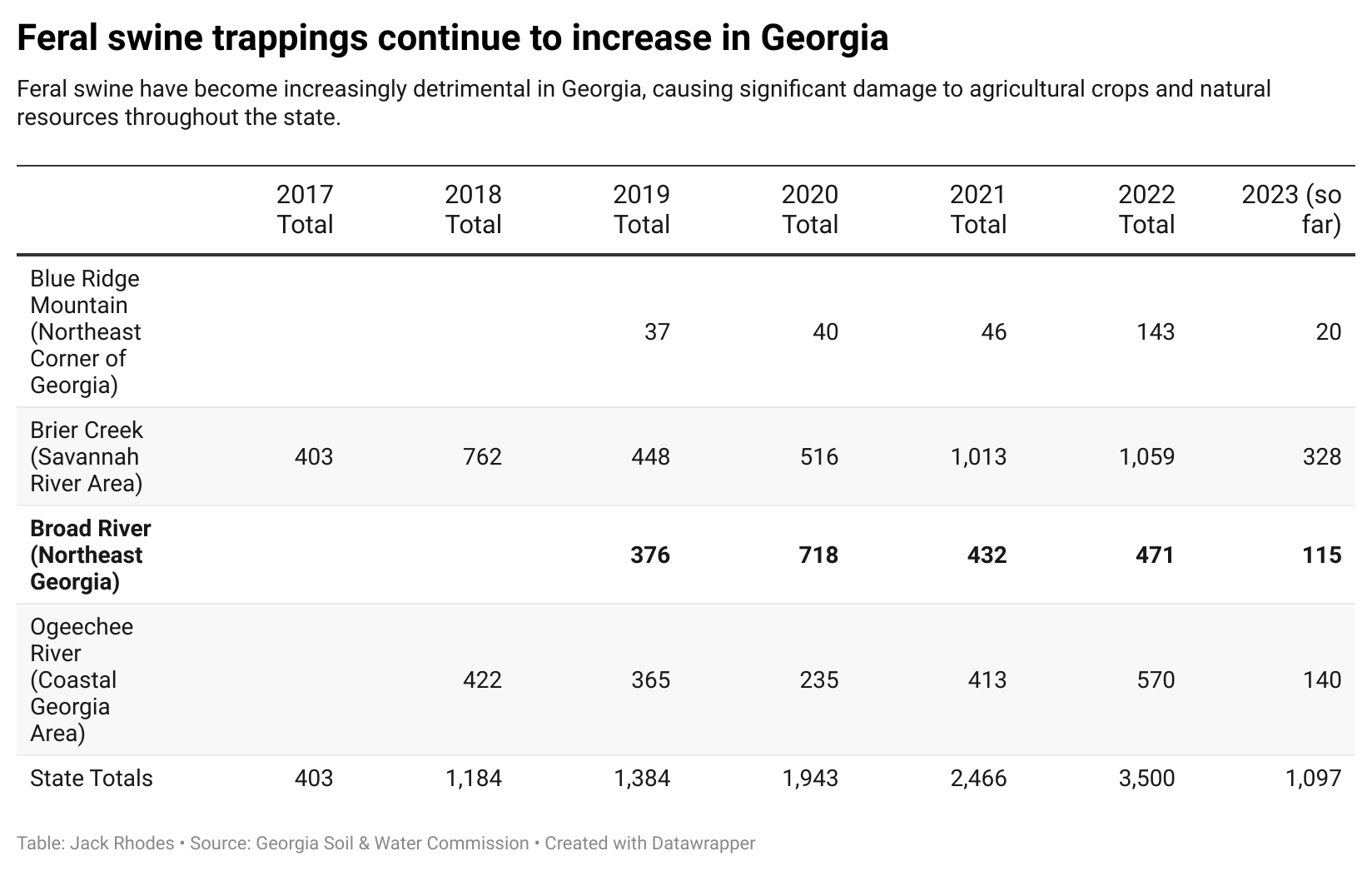
Large corral-style traps, which are 30-40 feet in diameter, have been identified as the most effective tool to manage these animals, Ondovchik said. The traps are usually circular and have an open top to minimize capturing other animals.
They also require wide doors, so an entire sounder, the word for a herd of feral swine, can be attracted into the pre-baited trap. Common forms of bait include whole corn and soured grains.
Once trapped, there are approved methods of disposal. According to GDA Rule 40-13-5, methods of carcass disposal include: burning, incineration, burial and rendering. But, disposal of dead animals must be completed within 24 hours of death and can’t be in an area that will contaminate surface or groundwater.
Drawbacks of other methods
Smaller traps, which some landowners use, catch only a few swine and allow the others to remain free and continue to reproduce at alarmingly fast rates.
"People like to brag about how many pigs they have removed,” Ondovchik said. “But it is not about how many you removed, it is about how many you have left behind."
Swine also have the ability to educate themselves about a trap and learn to avoid it, which means patience is crucial to capture the entire sounder.
"Trapping is a process. It is not an event,” Mengak said. “It may take a week to build a trap and get animals to come to it.”
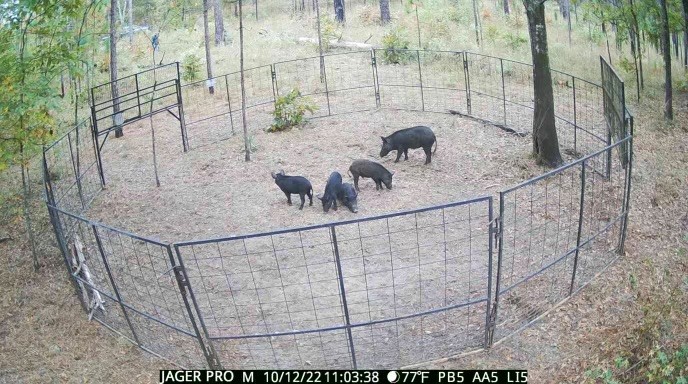
Because of the time it takes for large corral-style traps to become effective, some people with feral swine issues have resorted to shooting the pigs to mitigate the damage.
“If you have damages to a cemetery or a golf course, you can't wait a week and may have to go shoot them now," Ondovchik said.
Unfortunately, shooting for control is often mistaken with recreational sports hunting, which creates an incentive to keep the pigs for game, therefore increasing the population issues.
“If there is a commercial and monetary incentive with feral hogs, then there will be no desire to get rid of them,” Ondovchik said.
Strickland and other authorities also worry about the aggressive nature of the pigs. Strickland said if someone corners a hog, it’s big enough to seriously harm or kill a person with its tusks.
Whether it is for control or hunting, shooting feral swine is not as effective as a large corral-style trap and will limit a property owner's ability to eliminate an entire population.
"You can't shoot yourself out of this one," Mengak said.
Population reduction of feral swine is crucial to minimize damage caused to habitats, Mengak said, and the larger traps seem to be the only way to implement effective control consistently.
"You can never take your foot off the gas, it never ends,” he said. “It is like cutting the grass. You cut the grass this week, and then next weekend, you cut it again."
A free guide — ”The Georgia Landowner's Guide to Feral Swine Management,” written by Mengak — covers biology of the pig, economic issues of feral swine, disease issues, legal issues, carcass disposal, environmental damages and proper trapping techniques. It can be found at georgiaferalswine.com, along with other information about large-scale feral swine control.
“If people feel that they cannot get ahead of the problem, at least contact USDA and see what solutions they offer for help,” Strickland said.

